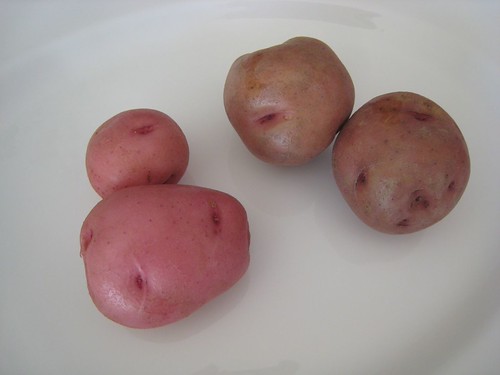Earlier this week I had the good fortune to finally see the program. It was played at a meeting of the First Men’s Garden Club. The film had a Dharma Intiative quality to it. I felt I was seeing something important, historic and also secretive, just like the Oceanic Six lost on that crazy island.
The video details how John Walls produced over 1,300 pounds of tomatoes per season in three 24-foot double rows of tomato plants. Amazing, right?
There was no smoking gun or magic potion. Just a carefully engineered and highly disciplined approach that created perfect growing conditions for an extended period of time.
Many people mistakenly think the growing season here in Dallas for tomatoes is quite long. Not true! Tomatoes need temperatures to be around 65F at night and 85F during the day to set fruit. Once we get into June and July when nighttime temperatures rarely dip below 80F, most plants shut down the production lines. The time window for the ideal temperature range is quite short here.
To extend that range, Mr. Walls got started early. He prepped the raised rows with compost, and he covered them with black plastic. For each plant he would cut a hole out of the plastic just over a foot in diameter. It’s my understanding this plastic kept the soil temperature higher than normal. This reminds me of the Earth Box, which you may have encountered.
He built a long, makeshift wood frame along the rows and covered its pitched roof with 3 mil plastic sheeting. Along the midline of each row he ran one PVC tube that looked to be about an inch in diameter. For each plant he drilled a hole about 45 degrees down from the top of the pipe, such that when a hose supplying the tube was turned on, it would create an arc of water right that hit right at the base of the plant. Each plant had a cage built from concrete reinforcing mesh.
He planted transplants level with the ground, not super deep as so many people around here suggest. In the hole he added a spoonful of cheap tomato food. Near the base of the transplant he added a cupful of granulated sugar and about the same amount of Epsom salt. Where the water flowed near each plant he inserted a single multivitamin. He watered thoroughly at the beginning and end of each day only when the ground two inches down felt dry.
He was meticulous about keeping the rows clean, and the pathways between the rows he kept neat by covering them with roofing paper.
I am sure there were a few more details there but that’s the heart of it. I put some tomatoes out this week and will share what tips from the other portion of the lecture in a future post.




















